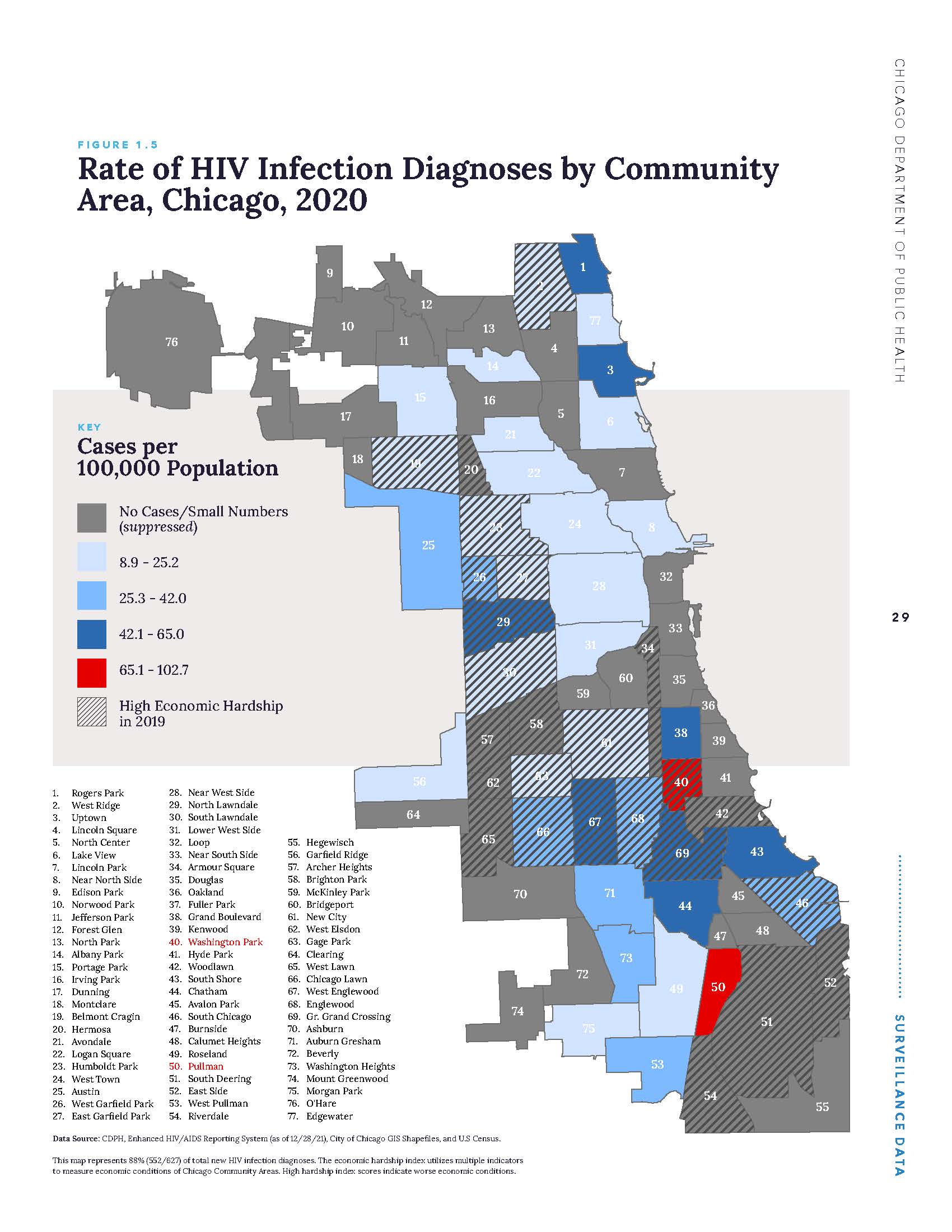Since 2015, Christina Hayford, MS, MSP, has provided Third Coast CFAR members and the
Chicago Department of Public Health (CDPH) staff with a host of geospatial analysis services such as cluster and hot spot analyses to track infectious diseases at the community level. With the recent emergence of infectious disease outbreaks like Mpox (formerly monkeypox), her role has taken on greater importance for the HIV research community in the Chicago area. Hayford is a senior research data analyst at CFAR and the CDPH.
Geospatial analyses utilizing Geographic Information Systems (GIS) software is especially useful with infectious diseases since researchers can find outbreaks concentrated in different geographic locations. The increased use of GIS software by the CDPH’s epidemiologists has enhanced Chicago’s infectious disease prevention and control efforts.
“GIS has allowed the CDPH to track outbreaks such as Mpox or a resurgence of congenital syphilis in a spatial way that helps with service deployment and planning,” said Hayford. “Sometimes we use it to determine whether the outbreak is spatially clustered or not. That alone is beneficial to know.”
Hayford has put together a virtual GIS training seminar for the CDPH HIV/STI epidemiologists and created a training exercise for them to make static maps of HIV and STI infection rates in Chicago communities, which have been used in the CDPH’s presentations and publications, including the annual CDPH HIV/STI Data Report. She has also showed epidemiologists how to perform geocoding that is specific to the software available to them through the CDPH. Over the years, training has evolved, and as new questions arise, Hayford works with the CDPH staff to try innovative ideas for data analysis.
Because of Hayford’s GIS services for the CDPH, CFAR members have benefited greatly. For example, they have increased availability to maps and spatial information for more infectious disease areas than ever before through the CDPH’s Syndemic Infectious Diseases annual report (formally the annual CDPH HIV/STI Data Report).
Hayford is a senior research data analyst on the Biostatistics and Computational Resources Team within the CFAR’s BSIS Core and provides GIS services to the Center’s members through the Core’s new voucher program to support HIV research.
“Doing GIS work and training folks in GIS is such a highlight of my job,” said Hayford. “I love helping CFAR members and the CDPH staff think through how to apply a question to data spatially since the questions can be different than they are used to. I also love being able to provide visuals because I think maps are so impactful. They help tell a story that are sometimes lost in words.”
Visit CFAR’s geospatial analysis services to learn more.




